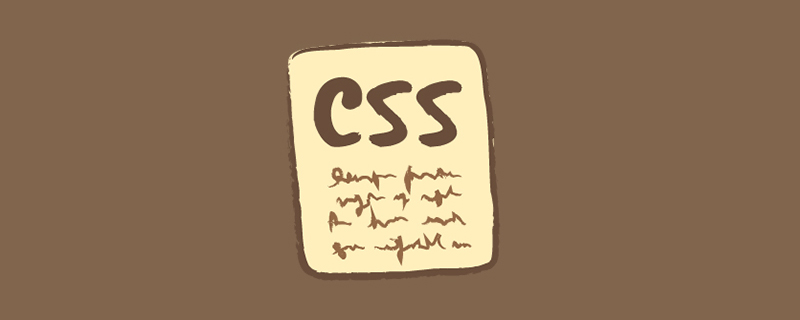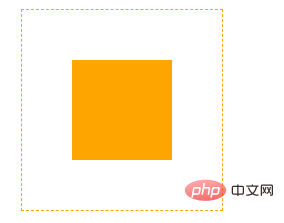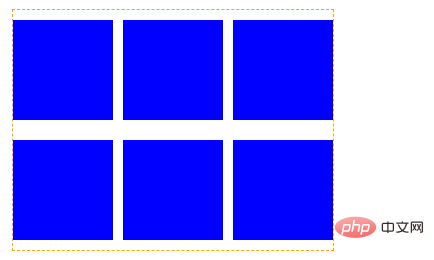CSS佈局的實用小技巧:margin負值

負邊距即margin屬性的值設為負值,在CSS佈局中時一個很有用的技巧。值為正的場景很常見,大家都很熟悉其表現
當margin-top、margin-left為負值的時候,會把元素上移、左移,同時文檔流中的位置也發生相應變化,這點與position:relative的元素設定top、left後元素還佔據原來位置不同
當margin-bottom、margin-right設為負值的時候,元素本身沒有位置變化,後面的元素會下移、右移
#看幾個應用場景
絕對定位元素
當元素被設定為絕對定位的時候其top、right、bottom、left值是指離最近的非static元素的距離,經典的垂直居中的一種方式正是利用的絕對定位元素的負邊距實現的
<style>
.wrap4{
position:relative;
margin:10px;
width:200px;
height:200px;
border:dashed 1px orange;
}
.wrap4 .content{
position:absolute;
width:100px;
height:100px;
top:50%;
left:50%;
margin-top:-50px;
margin-left:-50px;
background:orange;
}
</style>
<div class="wrap4">
<div class="content"></div>
</div>把元素設定為絕對定位,然後設定top和left為50%,這時候元素的上邊、左邊就到了父元素的50%處,再對元素設定自身高度、長度一般的負邊距,使元素中心移動到父元素中心,實現居中對齊

float元素
負邊距對float元素的影響也是按照上面說的,不過有其特殊性,我們看個例子就很清楚了
浮動元素負邊距
<style>
.float{
overflow:hidden;
width:280px;
border:dashed 1px orange;
}
.float .item{
width:100px;
height:100px;
float:left;
}
.float .item:nth-child(1){
background:red;
}
.float .item:nth-child(2){
background:grey;
}
.float .item:nth-child(3){
background:blue;
}
</style>
<div class="float">
<div class="item"></div>
<div class="item"></div>
<div class="item"></div>
</div>在一個寬度為280px的div中右3個float:left的子元素,寬度為100px,由於一排放不下,最後一個陪移動到了下一行

我們對程式碼稍作修改
<style>
.float{
overflow:hidden;
width:280px;
border:dashed 1px orange;
}
.float .item{
width:100px;
height:100px;
float:left;
}
.float .item:nth-child(1){
background:red;
}
.float .item:nth-child(2){
background:grey;
}
.float .item:nth-child(3){
background:blue;
margin-left:-20px;
}
</style>
<div class="float">
<div class="item"></div>
<div class="item"></div>
<div class="item"></div>
</div>第三個元素新增-20px的負邊距

多列佈局
<style>
.body{
width:500px;
margin:10px;
border:dashed 1px orange;
overflow:hidden;
}
.wrap3{
float:left;
width:100%;
}
.wrap3 .content{
height:200px;
margin-right:100px;
background:rgba(255,0,0,0.5);
}
.body .right{
width:100px;
height:200px;
float:left;
margin-left:-100px;
background:rgba(0,255,0,0.5)
}
</style>
<div class="body">
<div class="wrap3">
<div class="content">
Content Content Content Content Content Content Content
Content Content Content Content Content Content Content Content
</div>
</div>
<div class="right">Right</div>
</div>- #為content元素新增父元素,設定左浮動,寬度100%
- #content元素設定右邊距,值等於right的寬度
- right左浮動,然後設定其寬度的負邊距

普通元素
負邊距對不同區塊元素的影響很有意思,我們透過幾個例子來看一下多列列表
<style>
li{
line-height:2em;
}
.col2{
margin-left:150px;
}
.col3{
margin-left:300px;
}
li.top{
margin-top:-9em;
}
</style>
<ul>
<li class="col1">aaa</li>
<li class="col1">bbb</li>
<li class="col1">ccc</li>
<li class="col2 top">ddd</li>
<li class="col2">eee</li>
<li class="col2">fff</li>
<li class="col3 top">ggg</li>
<li class="col3">hhh</li>
<li class="col3">iii</li>
</ul>放大元素
什麼?負邊距還可以放大元素! ! !<style>
.wrap{
width:300px;
border:dashed 5px orange;
}
.wrap .inner{
height:50px;
margin:0 -50px;
background:blue;
opacity:0.5;
}
</style>
<div class="wrap0">
<div class="inner0">
inner inner inner inner inner inner inner inner inner inner inner inner
</div>
</div>
有右邊距的浮動子元素清單
 ##看到這種效果你第一個想法是什麼?會不會是子元素設定margin-right,在遍歷的時候nth-child(3n)還要設定為0,看看利用上面知識我們可以怎麼處理
##看到這種效果你第一個想法是什麼?會不會是子元素設定margin-right,在遍歷的時候nth-child(3n)還要設定為0,看看利用上面知識我們可以怎麼處理
<style>
.wrap2{
width:320px;
border:dashed 1px orange;
}
.wrap2 .inner{
overflow:hidden;
margin-right:-10px;
}
.wrap2 .item{
float:left;
width:100px;
height:100px;
margin:10px 10px 10px 0;
background:blue;
}
</style>
<div class="wrap2">
<div class="inner">
<div class="item"></div>
<div class="item"></div>
<div class="item"></div>
<div class="item"></div>
<div class="item"></div>
<div class="item"></div>
</div>
</div>我們沒有設定nth-child( 3n)的邊距為0,而是透過負邊距使父元素「變大」。
負邊距是不是很有意思,不很了解的少年們學起來吧!
更多程式相關知識,請造訪:
程式設計學習以上是CSS佈局的實用小技巧:margin負值的詳細內容。更多資訊請關注PHP中文網其他相關文章!

熱AI工具

Undresser.AI Undress
人工智慧驅動的應用程序,用於創建逼真的裸體照片

AI Clothes Remover
用於從照片中去除衣服的線上人工智慧工具。

Undress AI Tool
免費脫衣圖片

Clothoff.io
AI脫衣器

Video Face Swap
使用我們完全免費的人工智慧換臉工具,輕鬆在任何影片中換臉!

熱門文章

熱工具

記事本++7.3.1
好用且免費的程式碼編輯器

SublimeText3漢化版
中文版,非常好用

禪工作室 13.0.1
強大的PHP整合開發環境

Dreamweaver CS6
視覺化網頁開發工具

SublimeText3 Mac版
神級程式碼編輯軟體(SublimeText3)
 vue中怎麼用bootstrap
Apr 07, 2025 pm 11:33 PM
vue中怎麼用bootstrap
Apr 07, 2025 pm 11:33 PM
在 Vue.js 中使用 Bootstrap 分為五個步驟:安裝 Bootstrap。在 main.js 中導入 Bootstrap。直接在模板中使用 Bootstrap 組件。可選:自定義樣式。可選:使用插件。
 了解HTML,CSS和JavaScript:初學者指南
Apr 12, 2025 am 12:02 AM
了解HTML,CSS和JavaScript:初學者指南
Apr 12, 2025 am 12:02 AM
WebDevelovermentReliesonHtml,CSS和JavaScript:1)HTMLStructuresContent,2)CSSStyleSIT和3)JavaScriptAddSstractivity,形成thebasisofmodernWebemodernWebExexperiences。
 HTML,CSS和JavaScript的角色:核心職責
Apr 08, 2025 pm 07:05 PM
HTML,CSS和JavaScript的角色:核心職責
Apr 08, 2025 pm 07:05 PM
HTML定義網頁結構,CSS負責樣式和佈局,JavaScript賦予動態交互。三者在網頁開發中各司其職,共同構建豐富多彩的網站。
 bootstrap怎麼寫分割線
Apr 07, 2025 pm 03:12 PM
bootstrap怎麼寫分割線
Apr 07, 2025 pm 03:12 PM
創建 Bootstrap 分割線有兩種方法:使用 標籤,可創建水平分割線。使用 CSS border 屬性,可創建自定義樣式的分割線。
 bootstrap怎麼插入圖片
Apr 07, 2025 pm 03:30 PM
bootstrap怎麼插入圖片
Apr 07, 2025 pm 03:30 PM
在 Bootstrap 中插入圖片有以下幾種方法:直接插入圖片,使用 HTML 的 img 標籤。使用 Bootstrap 圖像組件,可以提供響應式圖片和更多樣式。設置圖片大小,使用 img-fluid 類可以使圖片自適應。設置邊框,使用 img-bordered 類。設置圓角,使用 img-rounded 類。設置陰影,使用 shadow 類。調整圖片大小和位置,使用 CSS 樣式。使用背景圖片,使用 background-image CSS 屬性。
 bootstrap怎麼設置框架
Apr 07, 2025 pm 03:27 PM
bootstrap怎麼設置框架
Apr 07, 2025 pm 03:27 PM
要設置 Bootstrap 框架,需要按照以下步驟:1. 通過 CDN 引用 Bootstrap 文件;2. 下載文件並將其託管在自己的服務器上;3. 在 HTML 中包含 Bootstrap 文件;4. 根據需要編譯 Sass/Less;5. 導入定製文件(可選)。設置完成後,即可使用 Bootstrap 的網格系統、組件和样式創建響應式網站和應用程序。
 bootstrap怎麼調整大小
Apr 07, 2025 pm 03:18 PM
bootstrap怎麼調整大小
Apr 07, 2025 pm 03:18 PM
要調整 Bootstrap 中元素大小,可以使用尺寸類,具體包括:調整寬度:.col-、.w-、.mw-調整高度:.h-、.min-h-、.max-h-
 bootstrap按鈕怎麼用
Apr 07, 2025 pm 03:09 PM
bootstrap按鈕怎麼用
Apr 07, 2025 pm 03:09 PM
如何使用 Bootstrap 按鈕?引入 Bootstrap CSS創建按鈕元素並添加 Bootstrap 按鈕類添加按鈕文本






